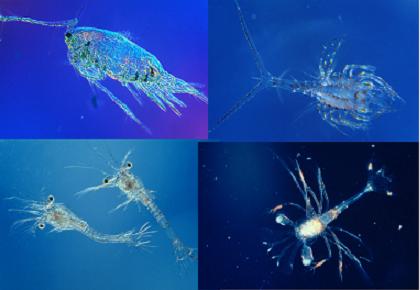Swimming against the current: researchers have developed a XNUMXD acoustic imaging system Fish TV to monitor the surprising behavior of tiny sea creatures * The study will be published on Friday in the journal Science

An international team of scientists from Israel, the USA and Germany - led by Prof. Ametsia Ganin from the Department of Evolution, Systematics and Ecology at the Hebrew University of Jerusalem and the Inter-University Institute of Marine Sciences in Eilat - discovered for the first time the extraordinary dynamics responsible for the creation of huge accumulations of tiny sea creatures in the ocean. An article about their research is published this week in the prestigious scientific journal Science.
Beneath the surface, innumerable tiny, semi-transparent creatures called "zooplankton" drift in the ocean currents and pile up. The new findings show that zooplankton drift passively in the current as their name indicates (planktos in Greek: drifted) but only in the horizontal direction. Against the vertical currents, these creatures show a surprising ability to swim against the current. Although scientists have long known that zooplankton live in a constantly flowing environment, their responses to ocean currents have until now been a mystery largely due to technological limitations in tracking the movements of such tiny and transparent creatures.
A 3D acoustic imaging system recently developed in the laboratory of Dr. Jules Yaffe at the Scripps Institution of Oceanography at the University of California, San Diego, allowed the team of researchers to track the movement of hundreds of thousands of individual zooplankton on the beaches of Eilat and Ras Burka in Sinai. The system, known as Fish TV and whose principle of operation is similar to that of medical ultrasound, uses sonar to monitor the movement of animals underwater at a distance of up to XNUMX meters.
The research shows that these tiny creatures effectively maintain a constant depth by actively swimming against rising or falling currents at speeds up to tens of times their body length per second. The ocean water flowing downwards is accompanied by a horizontal flow that constantly transports more and more creatures to the area of the downward flow. When zooplankton swim upwards against the descending current, a coalescence zone is formed where the creatures that maintain their depth accumulate.
"Our discovery shows that this is one of the common features of zooplankton living throughout the ocean," says Ganin, lead researcher on the paper. "Clumps (of tiny animals) are created in this process on every possible scale, from a few millimeters to hundreds of kilometers. Understanding the mechanisms that produce such aggregates is a central goal in the study of marine biology."
The results of the multinational research project were obtained through three experiments that lasted several weeks at two sites in the Red Sea, near the coral reef in Eilat and on the beach of Ras Burka in Sinai. Divers attached the Fish TV device to a large underground tripod that rises to a height of 6 m above the seabed. The sonar head is connected to a control and data collection unit consisting of a computer and additional electronic hardware.
"The ability of zooplankton to remain at a constant depth of exactly centimeters, sometimes in the face of strong vertical currents, shows that these tiny creatures have extremely sensitive depth sensors that have not been known until now. Maintaining depth with such great precision and in such flow conditions is extremely surprising for such tiny creatures. This behavior has important ecological consequences for the growth rates of many fish that feed on the zooplankton and for the spoils of fishermen who kill those predators," says Ganin. "The fact that depth preservation has evolved in so many species indicates that this strenuous behavior has real advantages for the tiny creatures, advantages that so far are not fully understood. Discovering those advantages and understanding how the tiny zooplankton manage to sense their depth with such great precision will be an important and exciting challenge for future research in marine ecology."
The research published in Science was carried out as part of the "Red Sea Program" funded by the German Ministry of Science and Technology and funded by the US-Israel Binational Foundation. The team of researchers includes, in addition to Prof. Ametsia Ganin from the Hebrew University, his student Ruth Motro-Reif, Dr. Jules Yaffe and Prof. Peter Franks from the USA and Dr. Claudio Richter from Germany.

One response
Liiiiiiiiiiiiiiiiiiiiiiiiiiiiiiiiiiiiiiiiiiiiiiiiiiiiiiiiiiiiiiiiiiiii